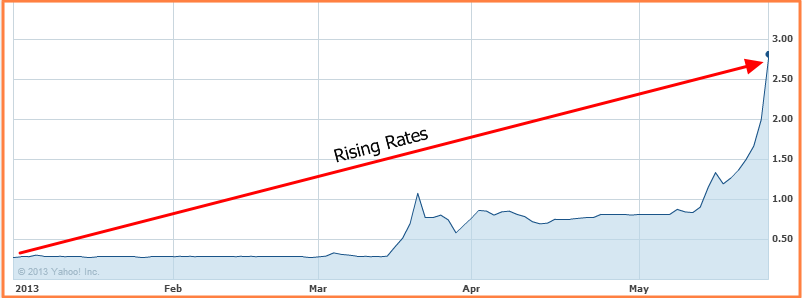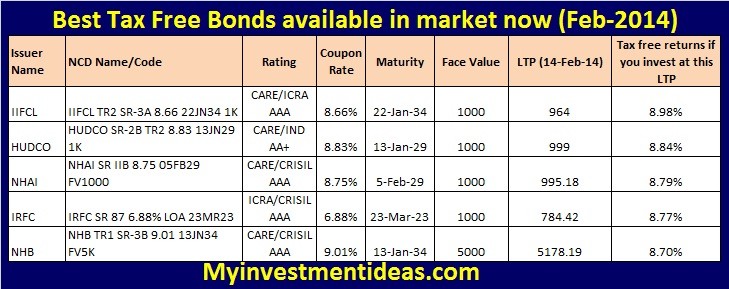The 5 Best Reasons to Start Investing in Bonds Now
Post on: 1 Апрель, 2015 No Comment

Everyone talks about investing in stocks, but smart investors do not ignore bonds. Read on, and maybe you’ll agree that it’s high time you start bonding with bonds thanks to these five basic bond benefits. (See also: A Low-Risk Investment Plan )
1. Diversification
Bonds can increase your financial safety by diversifying your portfolio because stocks are prone to volatility while bonds tend to be more stable.
By holding bonds, in addition to stocks and other investments, you’re not putting all your eggs in one basket. Although stocks can go up, they can also go down sometimes a lot.
Plus, bonds often do better when stocks are doing badly. While stocks represent ownership in companies, bonds are essentially loans. Governments, utilities, and companies issue, or sell, bonds when they want to borrow money. When you buy a bond, you’re lending money to them. The values of the two investments are based on different factors. In times of uncertainty, investors flee stocks and buy safe, high-quality bonds. In times of economic growth, investors typically buy stocks but increasing interest rates can push bond prices down.
2. Steady Income
Bonds can provide consistent income, a great benefit for retirees. Unless the borrower defaults, investors will be paid, typically twice a year. On the other hand, companies are under no obligation to pay stock owners a dividend.
3. Liquidity
Most bonds, especially those of large companies and the U.S. government, offer liquidity, meaning they can easily be converted to cash. Popular bonds can easily be sold if the investor needs the money for another purpose and wants to cash out.
4. Legal Protections
Bond holders are more likely than stock investors to get their money back if a company goes bankrupt. In a bankruptcy court, bond investors have priority over shareholders in claims on the company’s assets. Structured bonds get first priority over unsecured and subordinate bonds.
5. Tax Benefits
Some government bonds offer tax benefits, especially beneficial for high-income earners in states with high income taxes. Interest from municipal bonds, or munis, is not subject to federal taxes. And investors generally don’t pay state or local taxes on interest from municipal bonds in their own state.
And Now for the Risks
Bonds are attractive for the reasons noted above, but they are not without risk.
Interest Rate Risk
Rising interest rates pose a risk to all types of bonds. When interest rates go up, the value of bonds go down. That’s because investors prefer to buy new bonds with higher yields, rather than older bonds with lower rates.
Detractors say interest rate risk is a major risk. If rates rise and you sell a bond, you will lose money. But remember if you keep the bond until its maturity, you continue getting interest payments and then get your principal back as expected as long as the issuer doesn’t default.
Default or Credit Risk
Default or credit risk is the risk that the company or city (remember Detroit?) could go bankrupt and not make payments. Naturally, companies regarded as riskier pay higher rates, while those seen as safer, like the U.S. government, pay lower rates. Investors can gauge default risk by examining ratings from credit rating agencies like Standard & Poor’s and Moody’s and mitigate risk by creating a diversified portfolio.
Fun With Funds
Since most people don’t have enough money to buy a slew of bonds, they instead buy bond mutual funds. frequently through employer-sponsored 401(k) plans that allow them to commit small amounts over time. These funds offer professional management and diversification by pooling the money of many investors.
For your first bond fund, experts typically recommend a blended fund holding a mix of different types of bonds, such as government, corporate and international bonds, and bonds with a range of maturities.
Don’t just jump on a fund with the highest yield. That probably means it’s highly risky. You don’t need to completely avoid risk, but it’s important to know what you’re getting into.

Look at the fund’s credit risk by checking the percentage of AAA bonds it holds versus lower-rated and non investment-grade bonds.
Longer duration means greater sensitivity to interest rate risk.
Most importantly, consider its fees and expenses. including back-end redemption fees.
A Few More Bond Basics
You know the benefits, you know the risks. But before you get out your checkbook, you should also understand some essential facts and definitions about bonds and what determines their value. Knowing about coupon rates, maturities, yields and prices, and how they are inter-related, is key to understanding the investments.
The coupon rate is the interest rate the bond issuer (the borrower) pays the investor (the lender).
The maturity is when the bond term ends and investors get their principal back in other words, when the loan ends. Bonds maturing within five years are considered short-term bonds. Those maturing in 10 years or more have long terms.
Because of changing interest rates, when bonds trade they frequently sell at premium. or more than its face value, or at a discount. or less than its face value.
Bond prices are expressed as a percentage of its face value, also called par value. For instance, one with a par value of $1,000 selling for 90 is worth $900.
The nominal yield is the same as the coupon. But the current yield. a more important figure, is the yearly interest divided by what the investor paid for it. For example, a $1000 bond with a coupon rate of 5% that was purchased at a discount of 90 would have a current yield of 5.5%.
And finally, yield to maturity. a more advanced calculation, is used to compare different bonds. It takes into account the bond’s price and assumes it’s held until maturity.
Have you added bonds to your portfolio?














